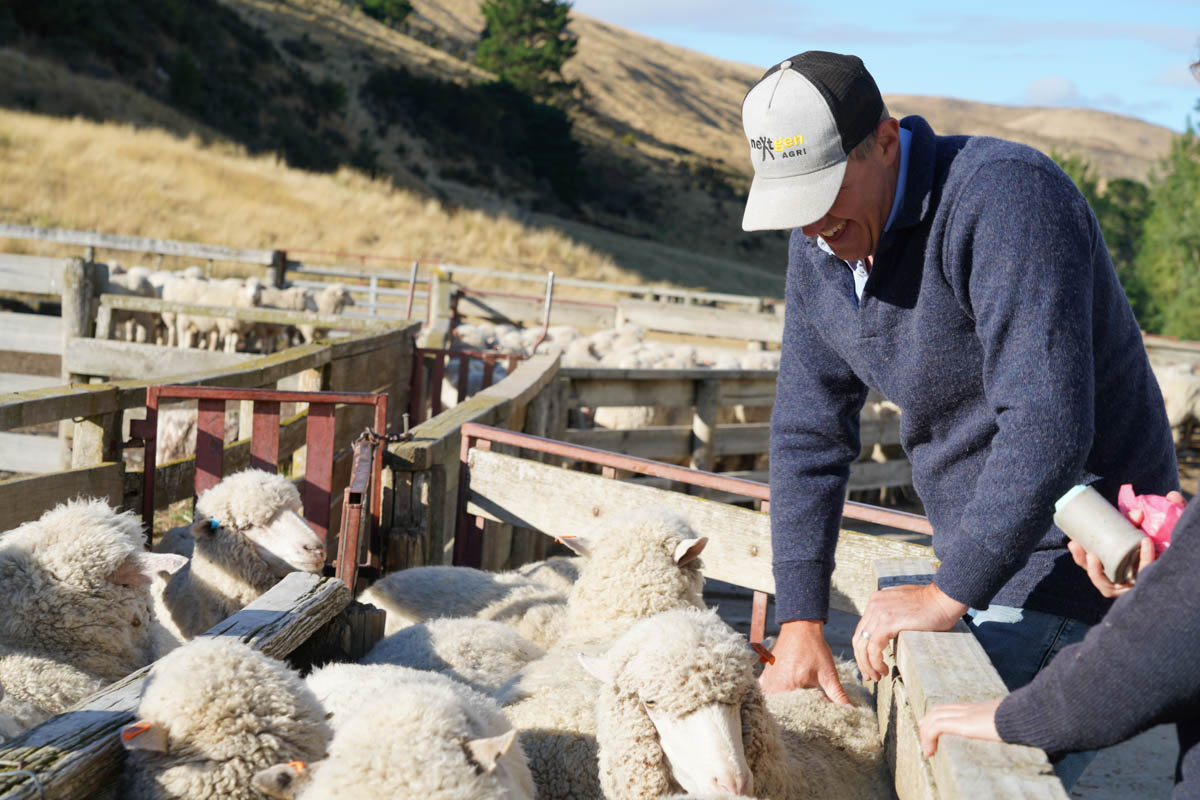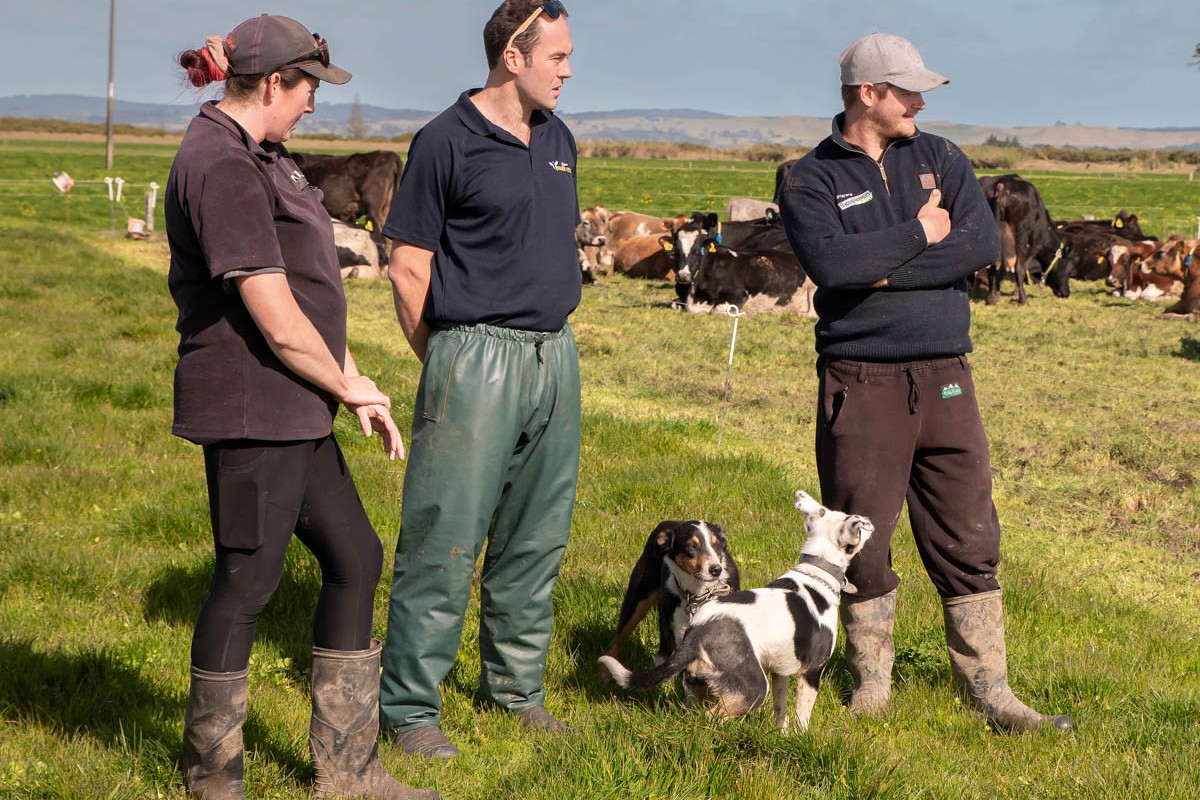In most aspects, the welfare of sheep on your average New Zealand sheep and beef farm is way better than most of our customers realise.
Their physical, social and emotional needs are met. They don’t need to worry about starving or getting too fat, they aren’t frightened or abused, they live very natural lives, all they have to do is sit around eating and chatting with their best mates.
In terms of animal welfare, the way we raise sheep in NZ is better in most measurable ways than just about any other animal production system anywhere in the world. One area where we may fall behind other systems is in lamb survival.
Lamb wastage (conceived but not surviving to weaning) is about 15-20% on many farms, even higher with triplets. The vast majority of these losses occur around lambing time – at lambing or in the first 48 hours.
Once you know what is causing these losses you can put steps into place to reduce them. The only way to know is to investigate those dead lambs.
With a little bit of training and a little bit of practice, farmers or farm staff can do their own post-mortem exams of dead lambs very quickly and safely. You get over the “yuck” factor quickly and can even pretend you’re on one of those forensic TV shows. With my regular clients I am happy for them to text me photos of anything they are unsure of – maybe have a discussion with your vet first!

The Process
First, always wear disposable gloves even if you hate the feel and never get sick. A good case of leptospirosis means six weeks off work, a bad case you can get chronic fatigue and you may never be able to farm again. If you’re pregnant, double gloves and a face mask, or delegate someone else for the job.
Collect as many dead bodies as you can find – you have to get in quick before the hawks find them. If you want to save them up you can stick them in the freezer, just be aware they need a good 2 days to thaw. It is important to look at lots of bodies – finding out what is going on in one or two animals doesn’t necessarily mean that is your main issue.
Have something handy to record what you find – paper and pencil or the techy people among you will be able to work out how to dictate into your cell phone without smearing blood everywhere.
The most important thing you are finding out is whether the majority of your lamb losses are due to starvation/mismothering, exposure, infection/disease, dystocia (difficult births), or are these in fact late abortions and not deaths at or around birth.
Having a standard protocol or way of going about it makes you more confident you haven’t missed anything. This is the way I do these and the way I teach my clients, there are other good protocols out there.
Examine the outside of the body. Is the lamb dry as though it was properly cleaned off by the ewe? Otherwise maybe mismothering is an issue. Is it fully formed and covered with hair? Otherwise this is an abortion and you should contact your veterinarian.
Look at the pads on the front hooves. These are present at birth and wear off when the lamb walks around. If they have worn off then the lamb lived long enough to get up and walk.
Lay the carcase on its back and cut between the front legs and the ribcage on each side. This makes the body lie reasonably stable. Cut carefully from the front of the brisket taking off the top of the chest, and the skin over the stomachs. This allows you to see the inside of the abdomen and the inside of the chest. Take a moment as you are peeling off the skin over the abdomen to look at the navel/umbilicus. If it is thicker than a pencil, contains pus or if there’s a lot of bruising around it this suggests infection (navel ill).
Sometimes when you open up the body you see pus very obviously in the lungs or around the internal organs – this means infection is the issue. Have a look at the liver. White spots suggest infection (this could be before or after birth). Tan circles could be bacterial abortion, talk to your vet.
Look at the stomach. You can pull it out and open it up. If it is full of clotted milk (cream cheese floating in clear liquid) then the lamb has had a good drink and starvation is not the issue. If it is completely empty then starvation is possible. Pull the stomach gently to one side and find the kidneys stuck right back against the spine. If there is no fat around the kidneys then starvation was what killed this lamb.
In the chest, have a look at and feel of the lungs. Don’t worry about the colour as this is very variable, but cut a little piece and see if it floats in water. If it sinks then the lamb never took a breath and dystocia or abortion are the issue.
When you have finished with the insides, remove the skin over the back of the neck and shoulders. In a normal lamb the skin separates easily from the underlying muscle. If there is lots of red jelly-like stuff under the skin this indicates bruising from a difficult lambing. Maybe dystocia is the issue (although you can get some bruising in a normal healthy delivery too). Sometimes with exposure (freezing to death) you will see jelly-like swelling under the skin of the front legs but this is inconsistent.
In summary, if the lamb did not breathe (no air in lungs) and had lots of bruising under the skin it is probably dystocia. If it is full of pus, has pus or bruising in the umbilicus, lungs stuck to the ribcage or white spots in the liver it is probably infection. If it breathed and walked but has a completely empty stomach and no fat around the kidneys it is probably starvation/mismothering.
What to do about it
Once you have looked at 20 or 30 lambs (minimum) and decided what your main cause of death is, you have the opportunity to improve outcomes for next year.
Starvation/exposure
You can’t control the weather but you can put multiple bearing ewes in paddocks with more shelter. Maternal behaviour depends on two things – genetics and feeding level. Ewes are better able to keep track of their lambs on 1400kg DM/ha covers than 1200kg DM/ha covers. With better feeding especially in the last four weeks before lambing the lambs have more brown fat reserves to get them up and going so they get that important first drink. And with better-feeding ewes have more colostrum to feed them. There is no downside.
Infection
In deaths after birth most of the infection comes in through the umbilicus/navel. The navel connects to the liver so infection often settles there. As blood circulates through the liver these rafts of bacteria can spread to the lungs and other organs. The more mud there is where the lambs are born the more likely infection is to come in the navel.
The worst outbreaks I have seen were lambing on crops, or where sheep consistently camp in a sheltered area and make it muddy. Think about how you can manage this on your farm.
Dystocia
Hopefully eventually we will see rams with a breeding value for low birth weight but fast pre-weaning growth as we see in beef cattle. Since these beef cattle easy calving genetics have become popular the workload of rural vets in springtime has decreased immensely. The value of saving these big single lambs would make it worth it. We aren’t there yet and I don’t know of any research in that area but hopefully it is coming. In the meantime, look at some breeds known to have low birth weights, especially for hogget lambing.
Nutrition also plays a part, but by the time you get to the last month before lambing that effect is no longer important. In other words, don’t tighten up your ewes (especially multiple-bearing ewes) too much in the last month before they lamb.
It is possible that some of these cases have a component of milk fever/sleepy sickness to them as well, where ewes have prolonged lambings because of low muscle tone from low energy (sleepy sickness) or low calcium (milk fever). Again good feeding in the last month before lambing is vital especially in older ewes with multiple lambs on board.
Abortion
If you are seeing abortions it is worth calling your vet to work these up. You are more likely to get an answer now than at docking. Bring in as many fresh foetuses as possible, with their placenta attached if possible.
Your vet will discuss the costs with you before sending samples away. With a full workup we usually do find a cause of the abortions, and many of these causes can be managed with vaccination or grazing management.
In summary, you can’t manage what you don’t know. Once you figure out the main causes of lamb deaths you have the opportunity to do something about them. Most lamb deaths are at lambing, so preventing these deaths will result in more lambs on the truck at weaning and better animal welfare.





